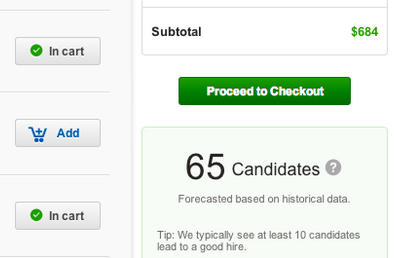OpenMethodology defines big data as “a collection of data sets so large and complex that it becomes difficult to process using on-hand database management tools or traditional data processing applications.” With literally millions of ads spread across hundreds of thousands of websites, employers need help in determining both where and when to place their paid job ads. The best way to do so is through application of big data techniques. Big data is at the core of creating a scientific approach to job advertising. Let’s see how it works.
There are thousands of places an employer can advertise its jobs – but through real-time data analysis of how other job ads have performed (i.e., Big Data), the employer can determine which sites are most likely to produce good results for a particular ad given the position and location. Predicting which sites to use can dramatically lower job ad costs and improve both the quantity and quality of applications. SmartRecruiters customers have posted 300,000+ jobs to a myriad of job sites, and based on the quantity and quality of candidates received, SmartRecruiters recommends where to post your next job.
Such an approach will yield both a mix of large, general sites, and smaller, more focused niche sites. By tuning the job ad distribution based on actual response data from similar ads, the employer can generate a specific number of relevant responses during a set time period – thus avoiding the ‘I’m overwhelmed with applications’ problem that is endemic with large, high traffic sites. Big data can also unearth useful sources of candidates that the employer might otherwise miss. This data-based method provides an ‘apples to apples’ comparison of a site’s productivity in terms of qualified applicants, instead of a simple tally of traffic or ‘clicks’. For more ofn how big data can work for you, read “Where to Post Jobs? There’s an Algorithm for That?”
Beyond a mix of large and small sites, predictive sourcing can drill down to where the employer should go for best results based on industry, geographic location, position, and candidate traffic. It is a solid first step past the guess-based placements of previous recruitment eras – and it’s integral to building a scientific and modern recruiting program,one that relies on data rather than intuition or faulty logic. An additional benefit: because predictive job placement is based on real-time data, such modifications can have a significant positive impact on short and long term hiring costs.
This is an excerpt from a SmartRecruiters White Paper, “The Evolution of Job Posting.” Read the entire White Paper here.
